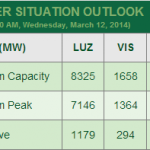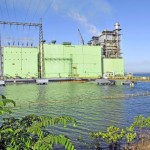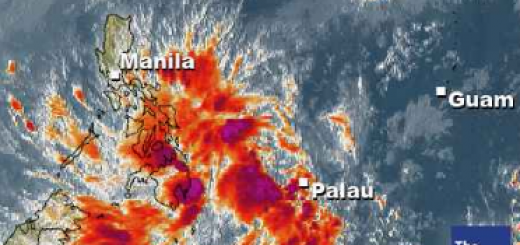No Power in Mindanao

Last night, around 03:00 a.m. it started to get warm in the bedroom. The fan didn’t work anymore. Reason: Brownout.
The whole Mindanao Power Grid failed. Mindanao and associated islands were simply a black spot on the map.
More than five hours after the lights went out, no officials had an explanation for how the power died over such a vast area of the country. And for how long it will last.
Here in Camiguin we had power just for the breakfast coffee. After we had to play on batteries again. At 01:18 p.m., 70% of the grid had been back to its original capacity – at least officials said.
During the whole afternoon in the brightest sunshine we had power. But since 06:18 p.m. we are again sitting in the dark. We have the dark feeling that it will be dark tonight again.
[GARD]
Fortunately we invested some pesos a year ago and installed solar panels, batteries and all over the house LED lamps. This LED lamps are consuming nearly no power, so one battery charged at 100% can supply enough power for 3 days of brown-out.
We will invest a bit more now. So we can operate fans and refrigerators with solar power. Off discussion are heavy power consumers such as aircon, water-heaters and standard light bulbs.
[GARD]
And now the big question. Why do local governments still invest in diesel and coal power plants? The retail price for photo-voltaic solar panels is now down to about 9000 Pesos per 100 Watt panel. If the government agencies could get together, they could order megawatts for a really fair price, say 50 to 60 pesos per Watt.
Or maybe the President’s office could trade fish against power. Why not? Pinoys and Chinese would smile again at each other. Solar panels do not smell 
And there is one good thing with these brownouts. Internet cafes cannot afford neither generators nor solar panels. So the gambling kids, consuming megabits of bandwidth for their silly on-line games, are off-line. And I get enough bandwidth to write this blog entry.











As a regular visitor to the Philippines I am amazed at the amount of “free” energy you have available. You have ample sun light, geothermal, hydro and wind. sometimes too much hydro and wind. Solar is OK for domestic use but for commercial use it requires a large amount of land for the panels and storage (batteries, hydrogen, reservoirs) for the 18 hours a day that it’s either night time or cloudy. Hydro is very expensive to construct and can be environmentally destructive. Wind isn’t good where wind speeds can exceed 110 mph. Geothermal would be a better option than coal, but you’d still need something like diesel or gas for the daily peaks.
Hi Bill,
I see that you write from Qatar. There is really enough sunlight to power all the air conditioners.
And there is enough money around.
Here in the Philippines use of solar power is growing. I write this answer with 100% solar energy.
Our house is now at about 90% solar power.
Big companies here, now also invest in solar energy. SM Supermarkets and Malls are covering their roofs
with solar panels.
The big problem are the past governments that did put big amounts of cash in their pockets. Money offered
by energy monopolists and fuel suppliers.
Maybe Rody Duterte will clean up these deals.
Cheers, waebi
My wife and I have a couple of plots, one with a nearly completed house the other is yet to be started, so I’ll be putting my money where my mouth is. A solar water heater is the first purchase with maybe some solar vents in lieu of ac.
Solar water heaters are available at hardware stores like Citi Hardware. They cost about 30,000 Pesos.
We did it ourselves with a foam insulated water tank and some 10 meters of black PVC hose. Not so performant but much cheaper.
Cheers, waebi
I have seen the prices of 260 Watt panels drop from 15000 to 8500 Peso over a one year period. Mainly due to people getting smarter on the import system. But battery prices and quality are still poor. So, stand alone systems are no good, but net-coupled systems are certainly worth while. Problem here is that Philippines does not have a good system feed-in tariff. Certainly, the law is there, but the action is missing like always here. This is a pity because with a reasonable feed-in tariff, you get a distributed power generation system, the government does not have to invest anything, people will do that for you automatically as they make a bit of money sending power back into the net. Maybe a matter of time, let’s hope so.
I fully agree.
We made the same experiences.
We now use 200 Ah batteries for which we paid 18 kPHP a piece. They seem to have a honest life span. At this time, they are 2 years in service.
Feeding our production surplus in the local network isn’t an option. The network is instable as hell (178 – 313 Volts and 52 to 67 Hertz).
The local electricity company pays only the generation charge of 5.53 Pesos per kWh. The rest of the 14.66 Pesos go to 20 other billable items
like system loss, metering system and Miss Elect, what ever this might mean.
Cheers, waebi